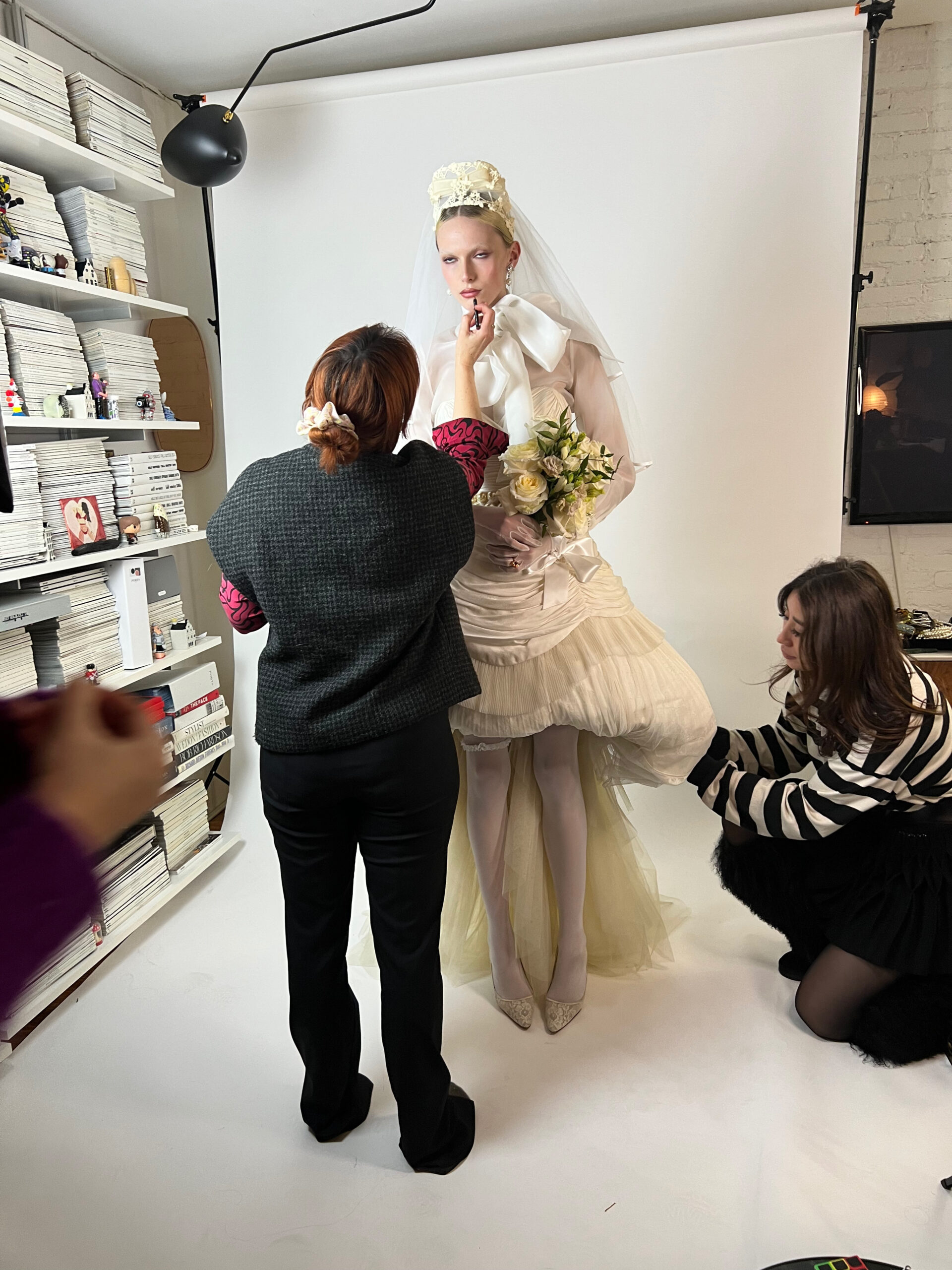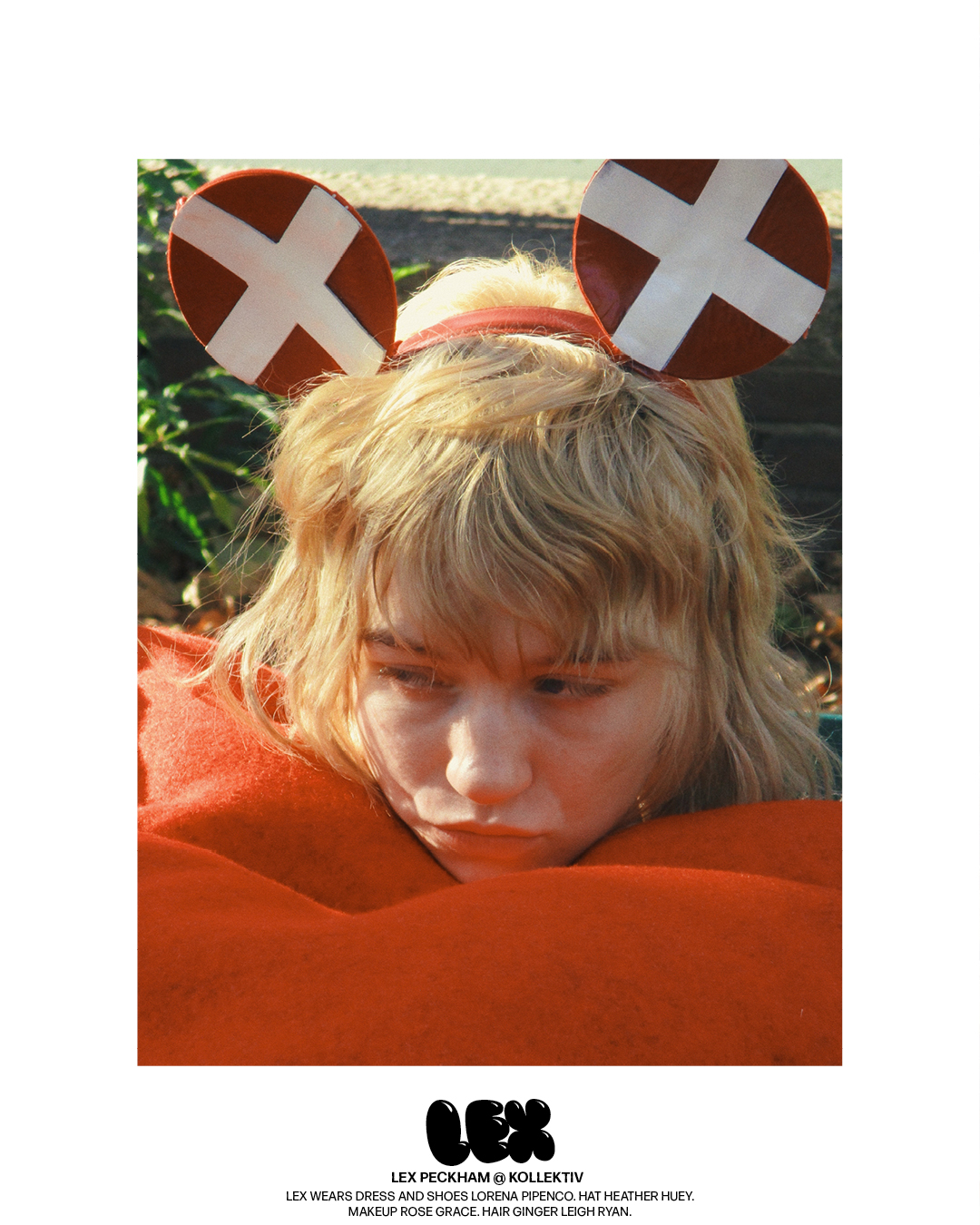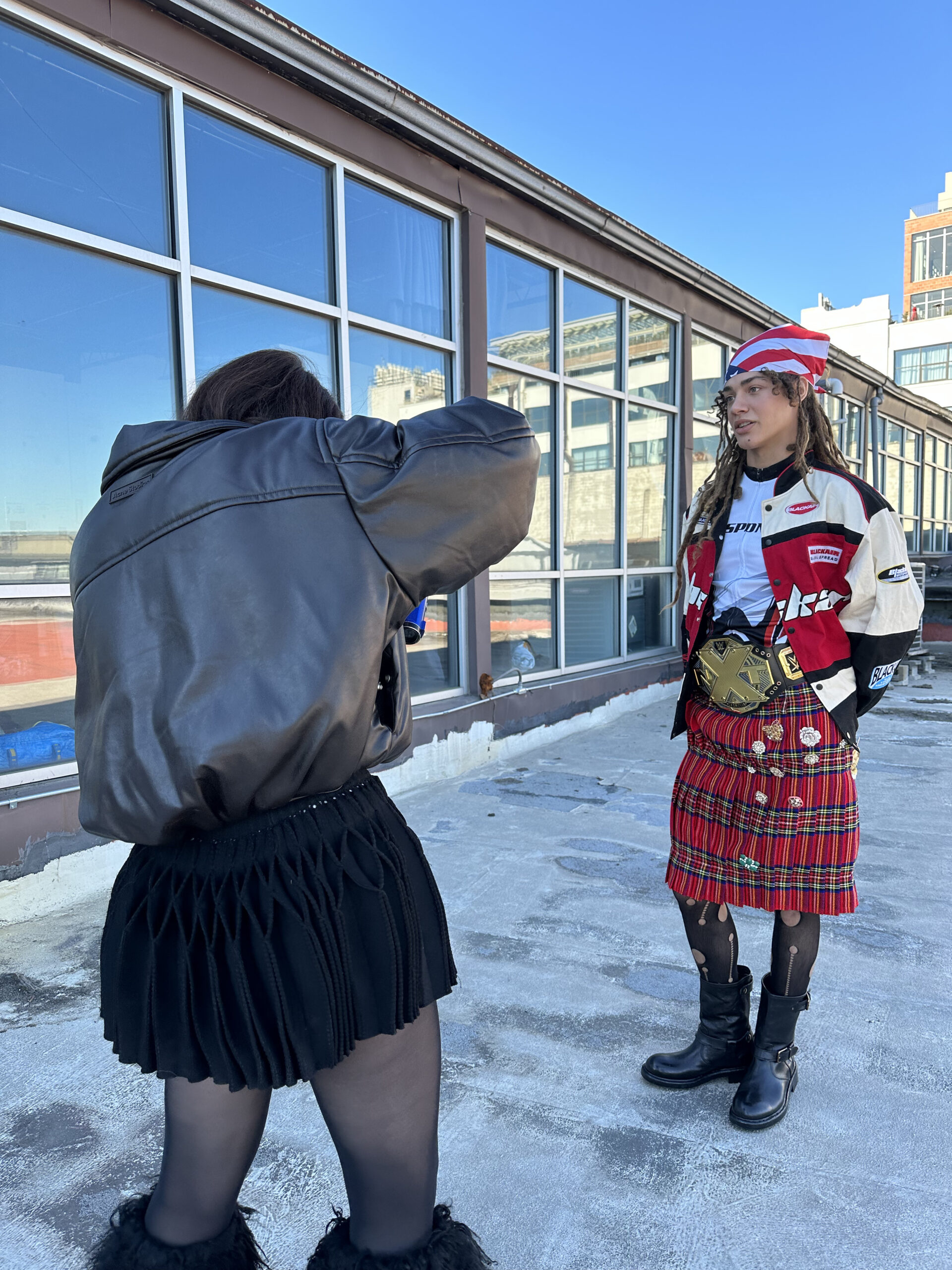Words / Su Ertekin-Taner
Photos / Courtesy of Natalie Tauger
A year ago, seasoned NYC stylist Natalie Tauger announced Look One with the grandiose yet opaque promise to disrupt the fashion industry. The initiative’s crux? Release one unique fashion look a day on Look One’s Instagram.
This New York Fashion Week, the ongoing initiative came into focus with Tauger’s one-night-only Look One gallery exhibit. The 65-photograph show rounded off a year’s worth of the founder’s photography, styling, production, and, as forecasted, industry-disrupting efforts.
Tauger has certainly shaken shit up over the year with her look-a-day project model. She’s reworked the coveted tenets of her classical training as a stylist, digitizing the print-biased fashion industry, experimenting in transient fashion with one-off photos, and making accessibility the canon.
Most intrinsic to the initiative, however, is Tauger’s subversion of the altruistic artist archetype, the artist who creates for someone (or thing) other than themselves. Though Tauger unveiled her opus in gallery format for an audience of Look One contributors and chronically online fashionistas alike, the project was never meant for them. Look One is really a platform that allows Tauger to be innovative in the ways she wants to be: she collects garments she likes, recruits models she admires, shoots concepts she respects. Look One is Natalie Tauger’s elevated personal mood board – a well-financed, carefully curated, and methodically rolled-out one at that.
LADYGUNN sat down with Tauger to extend her mood board analogy, secure some tips on collecting mood board inspiration, and probe into Look One’s recent gallery exhibition. Plus, scroll for a sneak peek at an unreleased Look One editorial.
This conversation has been edited for length and clarity.
Look One feels like a reimagination of the mood board. In what ways are you inspired by the concept of a mood board? What model of the mood board do you feel Look One best represents?
Natalie:
Mood board, for me, it’s like a very fashion-y term. I’m always associating that with, you walk into a designer studio, and they have a collage of inspiration that creates a world. I also would call a teenager’s bedroom that has posters hanging up a mood board in a way. I’m really interested in those two worlds. Those collages are how a lot of people express what they’re into and what inspires them.
Where do you find that the fashion world and world of popular culture meet?
Natalie:
I’m a very classically trained fashion stylist. I worked with Karl Templer for many years. I was on set with the biggest photographers. You could tell me October 1997, and I can tell you the cover of Italian Vogue. It’s just who I am, but I’m equally as obsessed with when Kylie Jenner posts a new Instagram. So, it was trying to find this way of speaking to people that are really into the Kylie Jenner photo and using my knowledge of the education I had within formal fashion training.
We’re living in a time where people are really obsessed by fashion. Even if you aren’t studying fashion or working in fashion. It’s not uncommon for people to be watching YouTube. So, fashion shows, as entertainment, knowing model’s names– it’s such an exciting culture. I wanted to speak to fashion people for sure. But I also wanted to engage people that might not have the vocabulary of knowing who the current designer is at Gucci, but are into street style, are into putting their own outfits together.
A lot of Look One is about accessibility. Even the fact that it’s on Instagram—this digital mood board—makes it open to everyone who may not be able to purchase that Italian Vogue. Can you talk to me a little bit more about how accessibility plays into this?
Natalie:
I think populism is not the antagonist of creativity. I think that you can try to speak to as many people as possible and still be innovative and cutting edge and say something that might be a bit provocative at times. I think there’s nothing wrong with that. And I think that really interested me. I think I’m also someone that’s very chronically online, and I wanted to use those powers for good. I wanted to engage with an audience that is definitely growing up with a phone in their hand and is switching back and forth between the apps. That is very much my lived experience as well. I wanted to find, selfishly, a like-minded community of people.
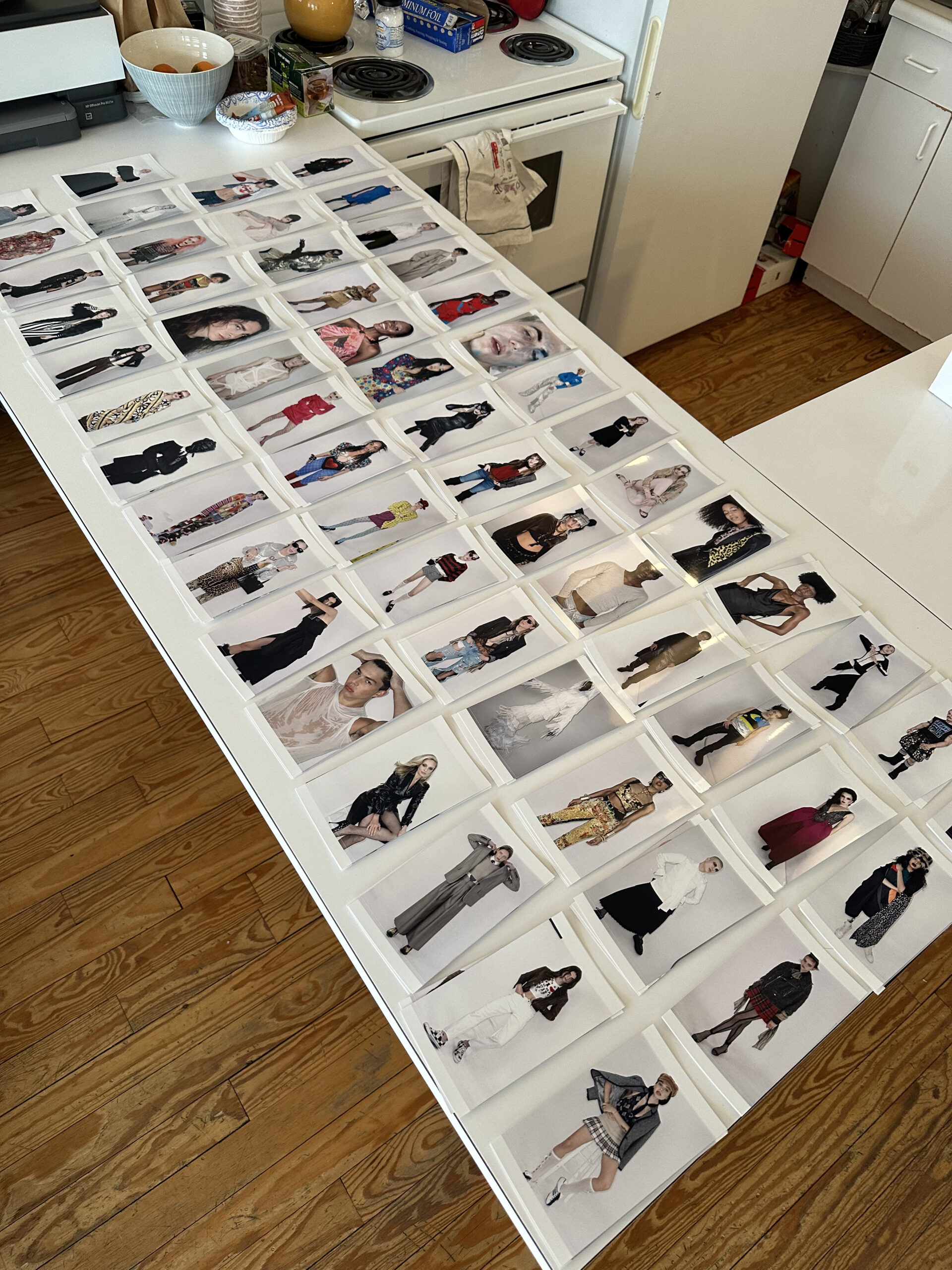
Switching gears a bit: To me, the mood board is a space where distinct images are placed in close proximity to each other, and they all circle around a particular theme. What is that one theme of Look One that you’re circling around? What is the essence?
Natalie:
Probably individuality, if I had to give it one word. I’m just inspired by people that march to the beat of their own drum that are doing something that maybe other people aren’t doing. And that’s always been very exciting to me, even from a young age.
We’re all sort of dividing ourselves silently into troops and into groups based on how we present. It’s this way of communicating. Okay, this is what I’m about. This is what I’m into. This is the type of human I am. So, the individuality aspect is something I so respect. And when I meet someone that I feel like, oh, wow, they’re really doing something with the way that they dress or the way that they put themselves together that is so their own, I find a kindred spirit with them in a lot of ways.
Did you create a mood board for each of these individual photos? For style and artistic vision?
Natalie:
Essentially, I do the shoots every few months. And I’ll do like 60 people at a time, over the course of a week. And when I do it, I’m very pre-planning in that way. Every single person has their own little mood board of references I like, photographs, ideas I might like, hair and makeup ideas I might like. It really comes together in this collage when I start to get the casting from Anitta Bitton, and that creates this whole ‘nother layer to the collage.
Anitta Bitton is a casting director for Establishment New York.
I’m so intrigued by this meta-mood board. So, you create a mood board in preparation for creating the mood board that is Look One. I love that!
Natalie
I think that was also just the way that I was trained. When I worked with Karl Templer, it was something that he really liked. And something that I, in turn, really liked. It’s funny, because then once the photos are done, and I work with the different team of art directors, it’s like, okay, now there’s a whole ‘nother mood board of how do you visually tell this story in a way that feels appropriate and authentic to the style, so the layout and the art direction enhances the vision rather than distracts from the vision? Every step of the way is a mood board. It would be like asking me to speak in a language I don’t speak. It’s so natural for me and my creative process in that way.
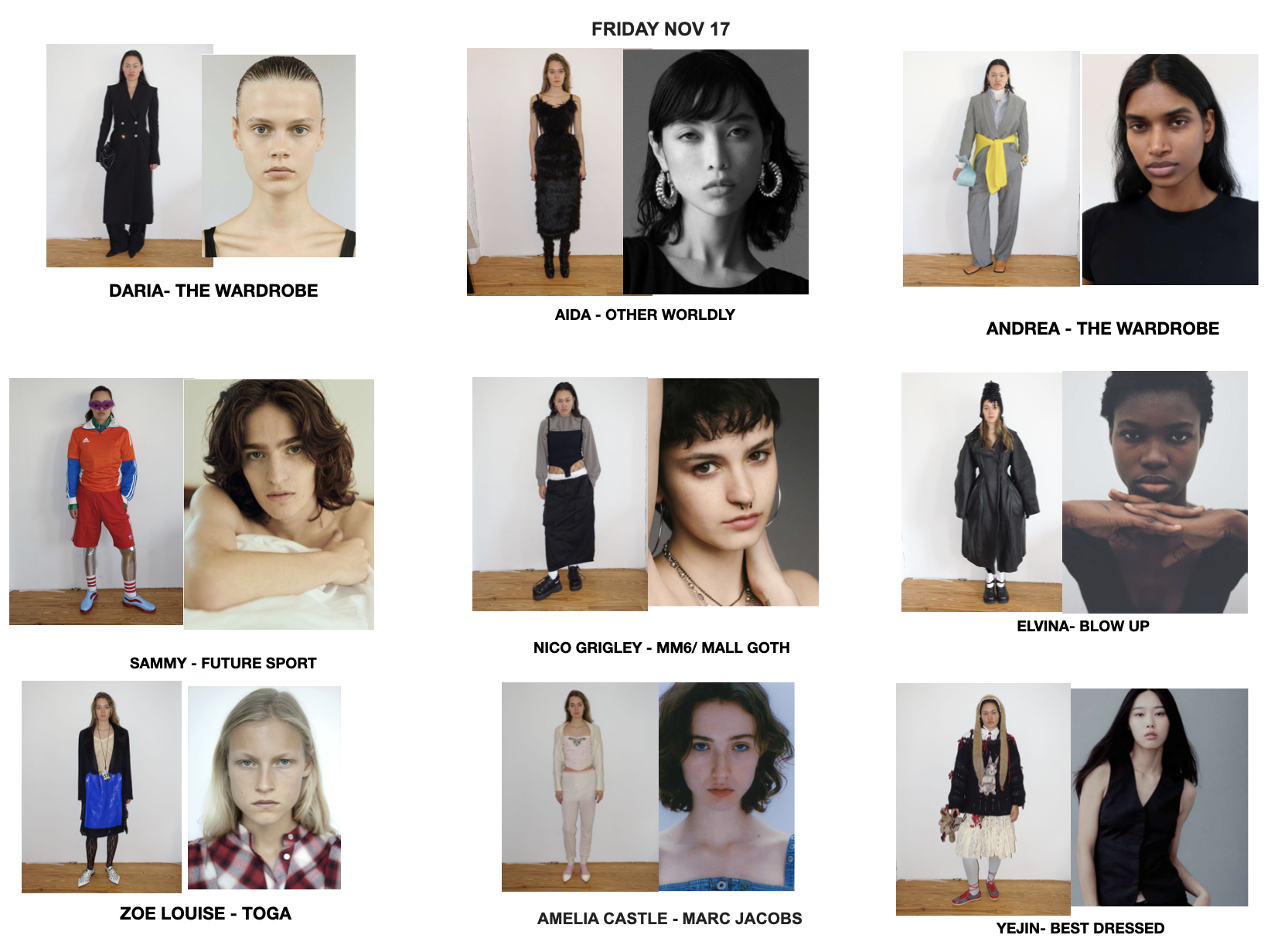
I’m wondering why you decided to make the digital Insta mood board that is Look One tangible in the NYFW exhibit? What was that like?
Natalie:
Okay, so the exhibit was, it was kind of a very logical choice in terms of we never did a party to celebrate it or anything. And it was right around the one year and I wanted to do something during fashion week. I wanted it to be the fantasy of, what would it be like to walk into the kid’s bedroom that is obsessed with Look One?
I’m not classically trained as a photographer. So, it was a very new journey for me in terms of resizing the images, re-coloring the images, printing the images out, I’d never hung the images like this before. So, I had an amazing group of people helping me to actually physically do the hanging of the looks.
I said on my own Instagram, it was like a dream I didn’t dare to dream because I just didn’t think that it would ever happen. I never saw myself taking photos like this. So, to be able to put it into a gallery space… Sometimes I think so much of what I’m trying to do with Look One is kind of just create my own rules. And yeah, people will be like, oh, well, that’s a bit conceited, just to do a gallery show, but why the hell not? Who makes these rules that say that you can’t do it after a while or who says that it has to be based on a certain metric? If I was somebody that wasn’t involved in this and I walked into it, I hope I would be pretty excited by it.
Talk to me a little bit about space. Why did you choose this space and the layout of the pictures in this way for the gallery?
Natalie:
So what I really liked about the gallery was that you can’t see into it from the street level. You have to go downstairs to see it. There’s no windows, which means that when you’re really in it, you’re surrounded by it. And there’s no escape, that’s moving your eyes somewhere else. The curation and choice of the images was really something that Devon Lee Carlson did, and that we collaborated on together. I’ve done 277 people, and I went through everybody’s photos, and I whittled it down to, like, 205 that I really loved. And that was a mixture of, I really love the photo, I really love the look, I really love the model. And also, what I would be as a spectator in a gallery thinking, like, okay, this belongs in a gallery, or this feels like part of a photographic art show rather than a magazine. And I sent it all to Devon. And then we texted back and forth, and she chose maybe 57, I think. And from there, I think what ended up being in the show was closer to 65.
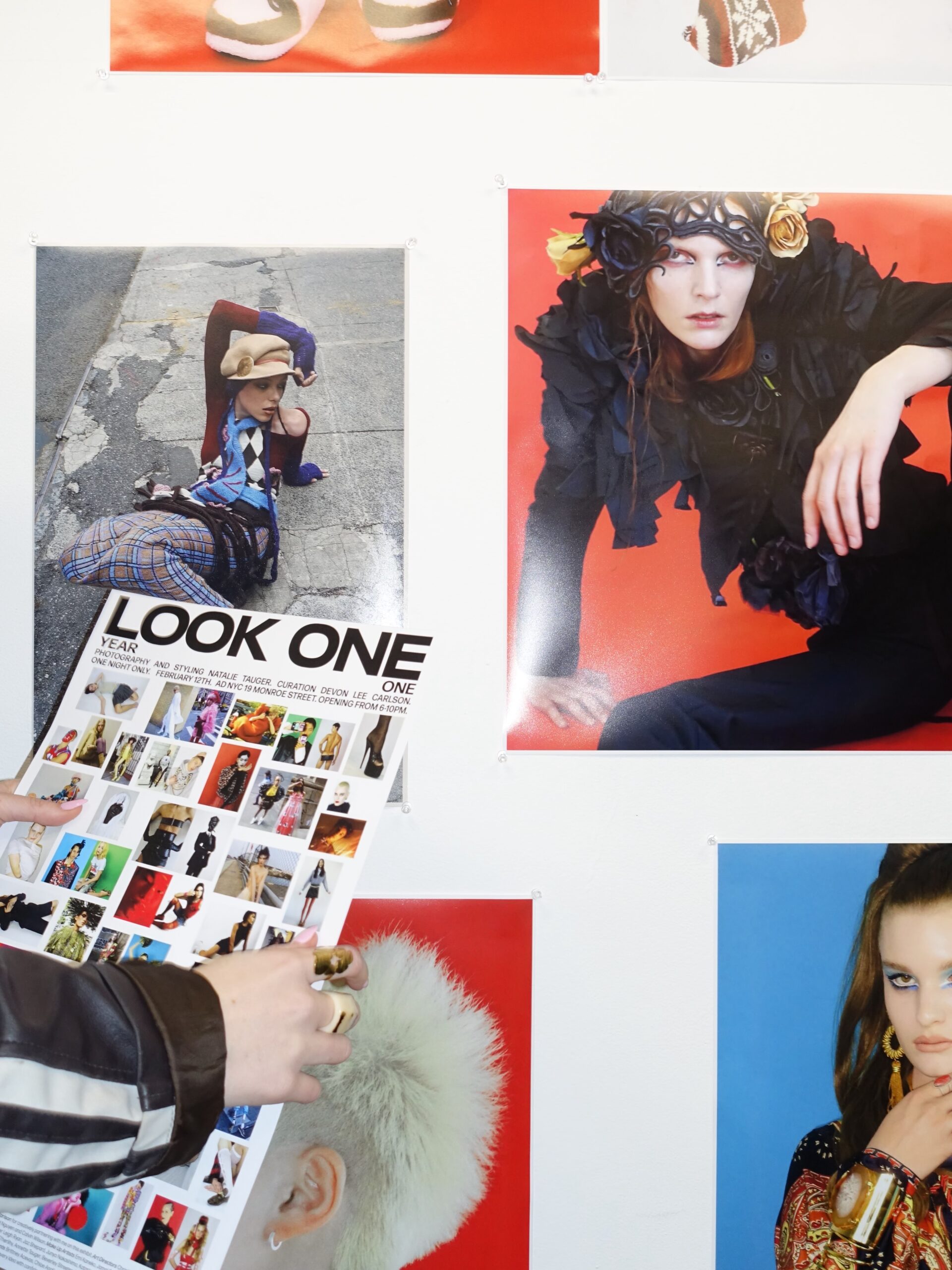
So this seems like a very intentional metaphorical mood board cork wall situation. Whose mood board is this?
Natalie:
I mean, me, first and foremost. I feel like I’m the audience because it really is my fantasy. And if other people fuck with that, then hell yeah. But it’s a very selfish thing in terms of, I’m doing what I think is good because that’s all I can really can and all I really know how to do. To try to speak to somebody or speak to something that isn’t my interest, well, then it feels inauthentic and the work probably won’t be as good if I’m not as passionate about it.
Could you give LADYGUNN some mood board curation tips since you are so well-versed?
Natalie:
I would say that the best advice I could give is…your eyes are your camera in your everyday, and to never turn that off and to be really aware. Inspiration comes from everything that you do. Sometimes I’m watching a TV show, and I pause it to take a picture of the TV. All these things come together in a planning stage. If I see something on Instagram that inspires me, I save it in a folder. If I see something on Pinterest, I save it in a folder. If I see something in a museum, I take a picture of it. All of these experiences that we’re living as creative people are being compounded and combined into a creative Bible that is our life. And if you’re someone that wants to create as an artist, then you shouldn’t turn that camera off and you shouldn’t turn that mindset off. For me, it’s not sitting in a library for hours, staying until I feel like, eureka, I found it. It’s this combination of so many things that excite me through lived experience that I can’t wait to talk about visually.
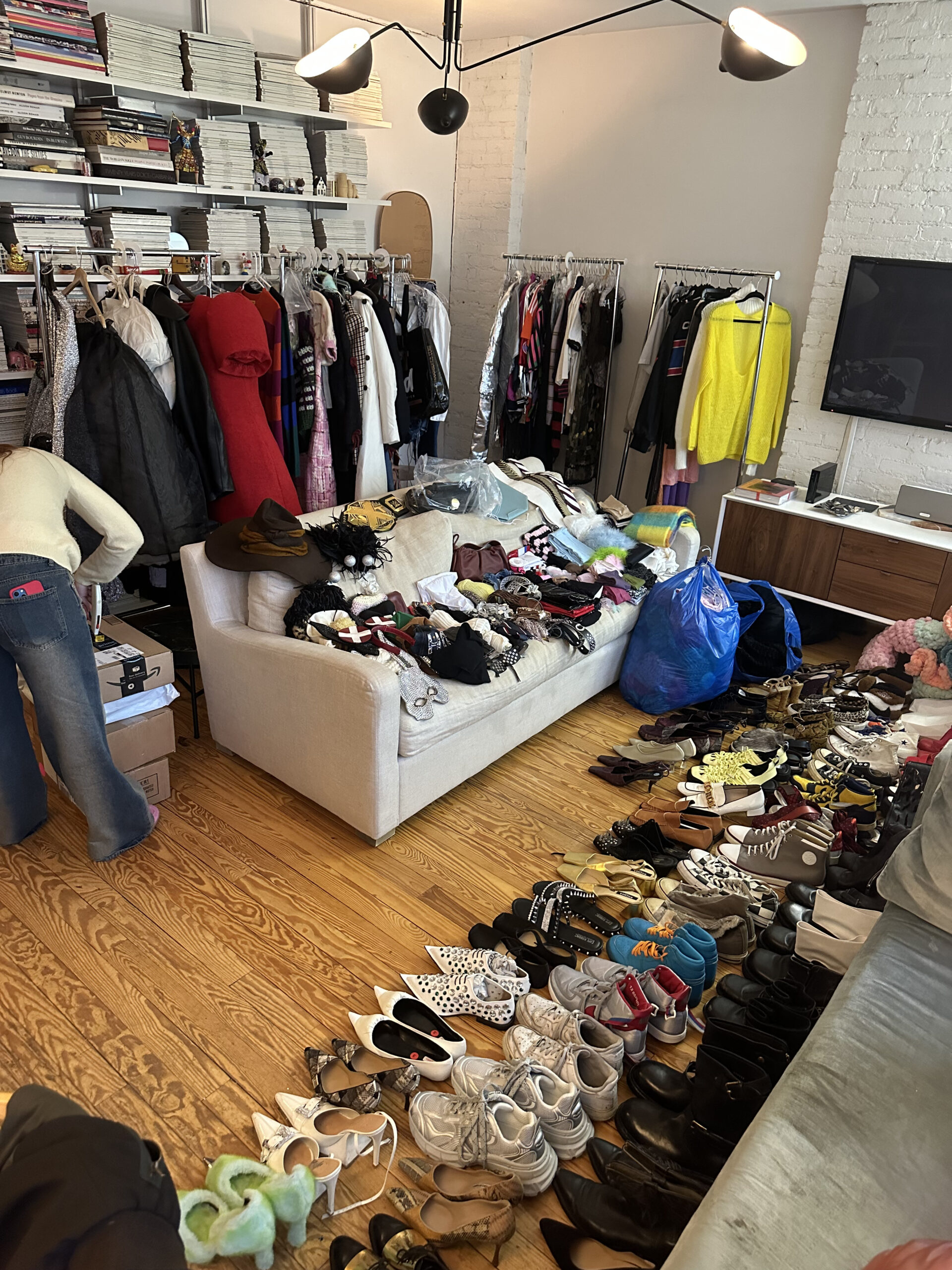
Finally, Look One Year One was the name of the gallery exhibition and to me this implies that there are more years to come. So, what is next for Look One?
Natalie:
I think I would love to do a book, eventually. Every time I do this, I’m trying to, you know, up the ante, change the way that I’ve done it in the past, challenge myself more, try to get the photography to be better, or try to get the fashion to be stronger. And in the immediate, it’s about just continuing to expand my creativity and continuing to expand my skill. Before I did this, I had never really taken a picture before. So, when I scroll all the way down to the beginning of the Instagram, and then I see the more recent things, I’m really quite blown away at one year of progress.
